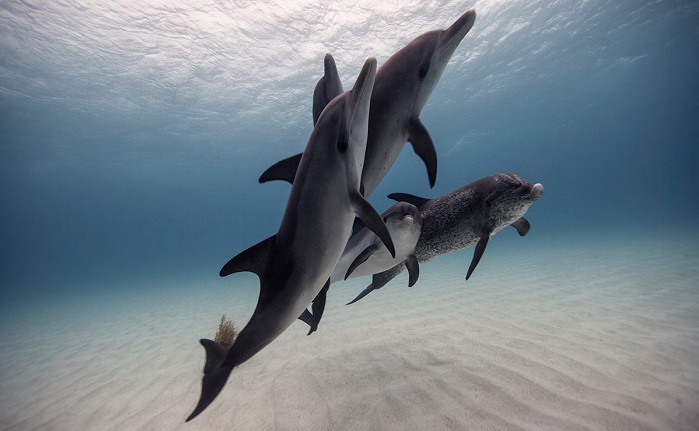Dolphins have a language that helps them solve problems together

The team conducted 24 canister trials, during which all six dolphins were present. Only two of the dolphins ever managed to crack the puzzle and get to the food.
The successful pair was prolific, though: in 20 of the trials, the same two adult males worked together to open the food canister in a matter of few minutes. In the other four trials, one of the dolphins managed to solve the problem on its own, but this was much trickier and took longer to execute.
But the real surprise came from recordings of the vocalisations the dolphins made during the experiment. The team found that when the dolphins worked together to open the canister, they made around three times more vocalisations than they did while opening the canister on their own or when there was either no canister present or no interaction with the canister in the pool.
Importantly, the researchers were able to show that the increase in burst pulse chatter was directly related to the canister-opening task as opposed to social interactions between the dolphins.
During the trials when one dolphin opened the canister unaided, one or more of the other dolphins was present nearby, watching the task. On these occasions, there was no increase in burst pulse chatter. The team concluded that the increased chatter during the joint canister opening was related to the task itself, and not to the presence of another dolphin.
“This is the first time that we can say conclusively that dolphin vocalisations were used to solve a cooperative task,” says Eskelinen.
Unlike most dolphin vocalisations, the so-called “burst pulses” the dolphins made are audible to humans as a squawking sound. We already knew that dolphins use burst pulses during social interaction and echolocation. But according to Leigh Torres, a marine ecologist at Oregon State University, these new findings suggest that burst pulses may have another sophisticated purpose.
“This study clearly shows that dolphins use vocal communication to jointly solve problems”, says Torres. “The results point toward the possibility of a dolphin language that enables team problem solving.”















































